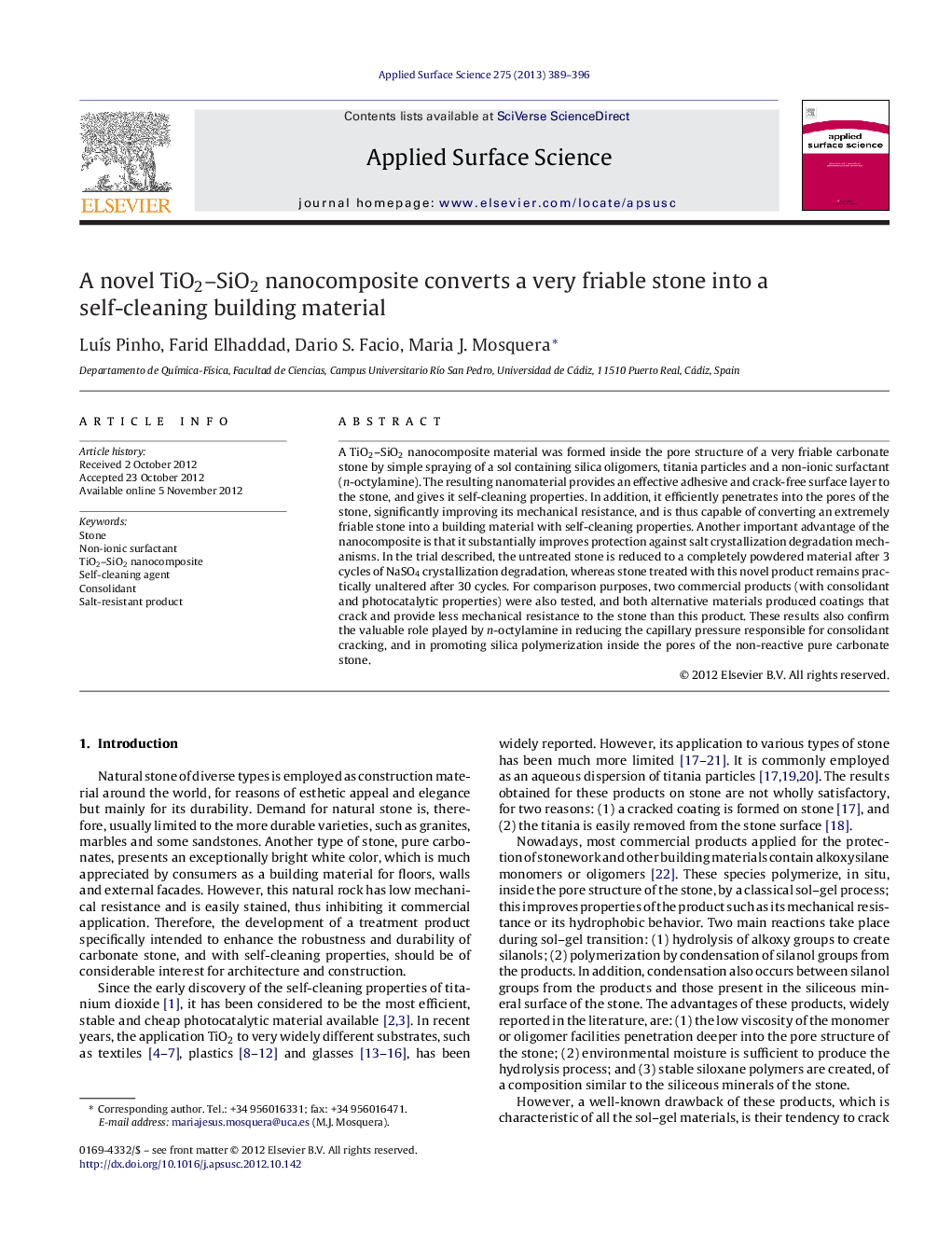| Article ID | Journal | Published Year | Pages | File Type |
|---|---|---|---|---|
| 5360306 | Applied Surface Science | 2013 | 8 Pages |
A TiO2-SiO2 nanocomposite material was formed inside the pore structure of a very friable carbonate stone by simple spraying of a sol containing silica oligomers, titania particles and a non-ionic surfactant (n-octylamine). The resulting nanomaterial provides an effective adhesive and crack-free surface layer to the stone, and gives it self-cleaning properties. In addition, it efficiently penetrates into the pores of the stone, significantly improving its mechanical resistance, and is thus capable of converting an extremely friable stone into a building material with self-cleaning properties. Another important advantage of the nanocomposite is that it substantially improves protection against salt crystallization degradation mechanisms. In the trial described, the untreated stone is reduced to a completely powdered material after 3 cycles of NaSO4 crystallization degradation, whereas stone treated with this novel product remains practically unaltered after 30 cycles. For comparison purposes, two commercial products (with consolidant and photocatalytic properties) were also tested, and both alternative materials produced coatings that crack and provide less mechanical resistance to the stone than this product. These results also confirm the valuable role played by n-octylamine in reducing the capillary pressure responsible for consolidant cracking, and in promoting silica polymerization inside the pores of the non-reactive pure carbonate stone.
Graphical abstractDownload full-size imageHighlights⺠An extremely friable stone is transformed into a building material. ⺠A TiO2-SiO2 nanocomposite is formed inside the pore structure of the stone. ⺠It creates a crack-free coating, which adheres firmly to the stone surface. ⺠This nanomaterial increases mechanical resistance and durability of the stone. ⺠It also provides self-cleaning properties to the stone.
